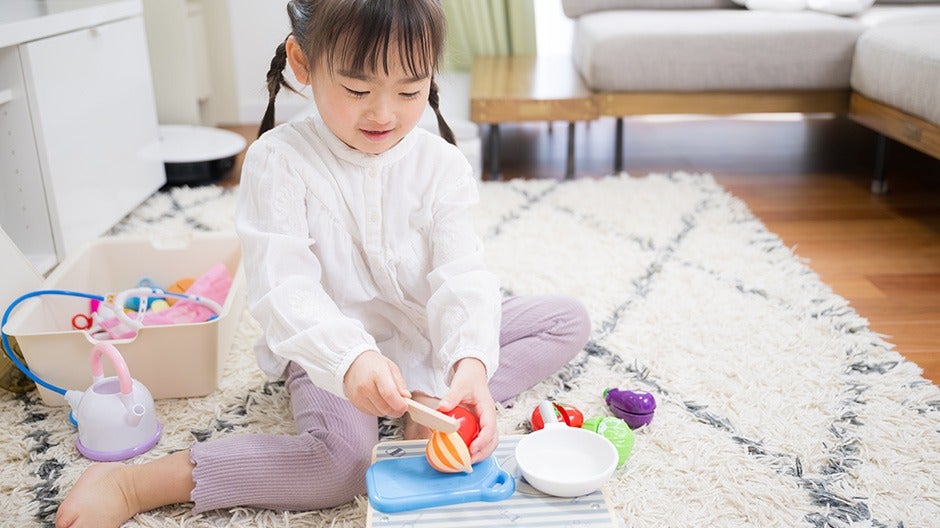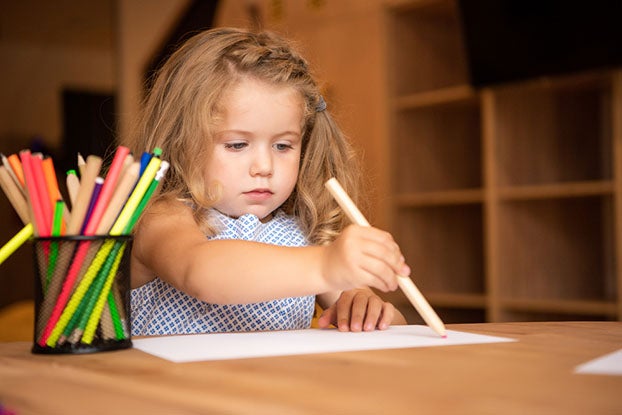Empathy is one of the most critical social-emotional skills your child will develop. It allows them to imagine what someone else is feeling, and it helps them value perspectives that are different from their own.
Developing empathy is part of building Character, one of the research-based 5 C’s at the heart of the Begin Approach to learning.
Kids who have well-developed Character skills do better in school. They’re also calmer and more emotionally resilient, and they have healthier relationships with friends, teachers, and classmates.
Teaching a child how to be empathetic feels like an enormous task (and it is!) but you can do it. And we can help! Try these creative ideas for building empathy in kids.
The Short Cut
- Empathy, the ability to understand how someone else is feeling, helps develop Character, one of the 5 C’s kids need to thrive in school and life
- While empathy doesn’t always come easily for kids, it can be learned
- Parents can help kids develop empathy by identifying and talking about feelings, asking kids to imagine how someone feels when playing pretend, and modeling what empathy looks like in action
- A social-emotional learning program like Learn with Sesame Street can help your child develop empathy and other essential aspects of Character
Why Teaching Empathy to Kids Is Important
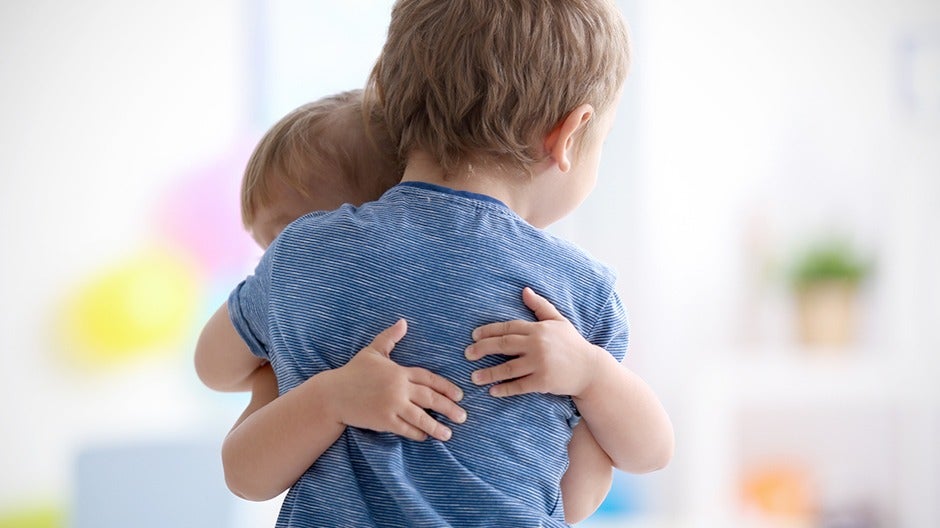
Empathy is one of the key social-emotional skills for kids. Seeing the world through another person’s eyes and trying to understand their perspective on it—this is the ultimate goal for teaching empathy to your child.
A stronger ability to empathize leads to:
- Improved relationships with family, friends, and classmates
- Greater ability to resolve conflicts
- Higher levels of cooperation
- A stronger sense of self-awareness
- The ability to make friends more easily
4 Ways to Nurture a Compassionate Mindset
Instilling empathy in kids begins with a strong foundation of love between a parent (or caregiver) and a child. When a child feels that bond and trusts they will be taken care of, they feel safe and secure. This makes it easier to care for others.
Beyond that start, you can create many important empathy lessons for your child through your own behavior. Try these four strategies.
1. Show Empathy Toward Your Child
Your child will more easily empathize with others if they know how good it feels themselves.
Let’s say you’re out at the playground and it’s time to go home, but your child wants to stay. Maybe they yell or stomp their feet. You could say something like, “Do you feel angry? It looks like you do. I understand you want to stay and play, but we need to get home.”
Later, you can reflect on the experience together—especially how your child felt when you recognized their emotions. Let them know this is what empathy feels like. Remind them that they can make someone else feel this way too.
2. Model Empathy Wherever You Go
You’ve probably been in some variation of this situation: You’re out with your kid at the grocery store, and something unusual happens.
Maybe someone drops a bag of apples and they roll out onto the floor. Your child might stop and stare. Or turn and walk the other way. Or even laugh.
It’s easy (and understandable!) to want to immediately explain to your child why their reaction might hurt the other person’s feelings. But try this instead: Let your child see your empathy in action.
You could gather the apples with the person. If they seem flustered or embarrassed, you could tell them about a time you dropped something in a public place too.
Modeling empathy like this gives your child an immediate example of what you want them to ultimately do. Later, you can have a conversation about their reaction versus your action and what they can try doing differently next time.
3. Use Books to Teach Nonverbal Cues
Your child may not initially be able to interpret downturned eyes as a sign of sadness. Or clenched fists as anger. Nonverbal body language can be tough to decipher for kids.
To work on that, try taking a picture book “walk” before you read. Go through each page in a story focusing on the illustrations. Ask your child to guess what emotions the characters are feeling and why.
Then read the book all the way through. Was your child right about the characters’ feelings?
While you read, give them time to connect the words in the story back to the images. This will reinforce learning those nonverbal cues.
4. Enlist the Help of Animals
Pets provide the perfect opportunity for children to explore empathy. A dog or a cat or a hamster can’t talk, but children often think about their needs anyway.
This attention to their pet’s comfort and care can be the foundation for empathy toward other people too.
Try playing a guessing game about a pet. If your cat is pouncing on a toy, you could ask your child, “What do you think he’s feeling?”
Even better, try to identify the pet’s feelings (and your child’s) when your child is the center of attention. If your dog wags their tail when your child enters the room, you could say, “She’s telling you how much she loves you. How does that feel?”
A recent study found that having a dog increases a child’s social-emotional skills. But even if you don’t have a pet, watching animals, talking about them, and engaging in imaginary play that includes animals helps kids develop empathy too. You can:
- Watch an animal video together (like this one from Sesame Street)
- Use stuffed animals in make-believe play
- Read a book that has animal characters
- Go for a walk in your neighborhood and observe animals
All of this will take time. Consistently modeling empathy and talking about it with your child will slowly but surely lead to a genuine understanding of this critical skill.
Teaching Empathy to a Child with ADHD
Be especially patient if you’ve got a child with ADHD or another neurodivergent challenge. They may move more quickly than other kids and miss clues to other people’s feelings. They might have trouble focusing when a situation becomes emotionally charged. Or they may not be skilled at reading body language yet.
They can definitely learn how to be compassionate toward others, but they might need a little more help and it might take a little longer.
3 Creative Ways to Teach Empathy and Compassion
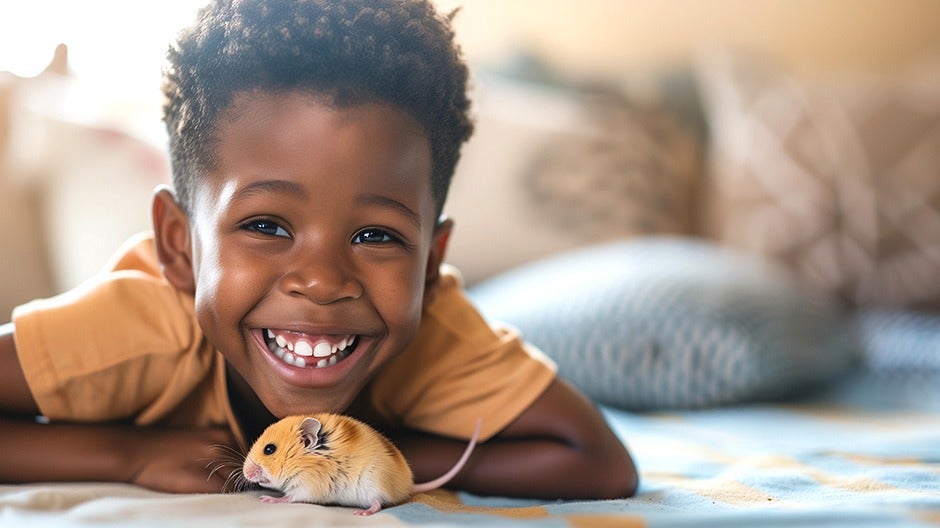
1. Make-Believe Play
Make-believe play is a great way for your child to imagine other people’s perspectives.
It works especially well if you choose scenarios that highlight emotions. For example, if your child pretends to be a veterinarian, you could be a pet owner who is scared because their dog is sick.
You can steer the play so your child has to imagine how you’re feeling and how to help.
What You Need
- Props or toys you have in your home
What to Do
- Choose a scenario (vet clinic, grocery store, restaurant, or anything else).
- Help your child gather whatever props they want.
- Choose parts.
- Play!
Another great way to reinforce empathy is to play for a while and then switch roles and play again from the other perspective.
2. Make a Feelings Collage
This hands-on activity focuses on recognizing different emotions. By searching for images that depict feelings like happy, sad, angry, and surprised, your child focuses on visual cues.
To reinforce the learning, you can talk while you search: “Why does that boy look scared? When was the last time you were scared? What did it feel like?”
What You Need
- Magazines, catalogs, coloring books, or a feelings printable
- Cardboard, poster board, or paper
- Scissors
- Glue (or tape)
- Markers (if you want to label emotions)
What to Do
- Go through the sources you’ve collected.
- Talk about the emotions you see in the images.
- Choose some and cut them out.
- Arrange them on the board or paper and glue (or tape) them down.
- Add feelings labels.
- Display!
3. Build a Bird Feeder
Piggybacking on building empathy by caring for animals, you and your child can make a bird feeder together for your neighborhood birds. Making muffin bird feeders is fun and easy—and has the added bonus of giving your child a chance to cook in the kitchen.
What You Need
- 1 cup all-purpose flour
- 1 cup whole wheat flour
- 1 egg
- 2 tablespoons maple syrup or honey
- 3 tablespoons butter, melted
- 1 cup milk
- ½ cup sunflower seeds
- ½ cup peanuts
- ½ cup raisins
- ½ cup dried cranberries
- 1 small apple
What to Do
- Preheat your oven to 400°F and grease a mini-muffin tin.
- Combine the flours in a medium-sized mixing bowl.
- Add in the wet ingredients: the egg, maple syrup or honey, butter, and milk.
- Add the nuts and fruits.
- Pour into the muffin tin and bake for about 15 minutes.
- Once the muffins are golden-brown, remove them from the oven and let them cool.
- Give your child the fun challenge of placing the muffin feeders all over your outdoor space, like on tree branches, under shrubs, and on your windowsill.
- Watch and see what the birds do!
A fun no-bake version of this is a pine cone bird feeder:
- Buy or gather pine cones.
- Tie a string onto the tip of each one.
- Mix peanut butter with a little bit of melted butter to soften it.
- Dip the cone in the mixture, then roll it in bird seed.
- Hang in a tree or from your window and watch!
This activity gives your child a lot of chances to slowly gain awareness of the importance of considering someone else’s situation. Try discussing:
- What the birds need
- How it feels to do something for the birds
- Whether you develop a relationship with any birds over time
- How you think the birds will feel if a squirrel (or another critter) grabs one or more of your feeders
Every Kindness Counts with Begin
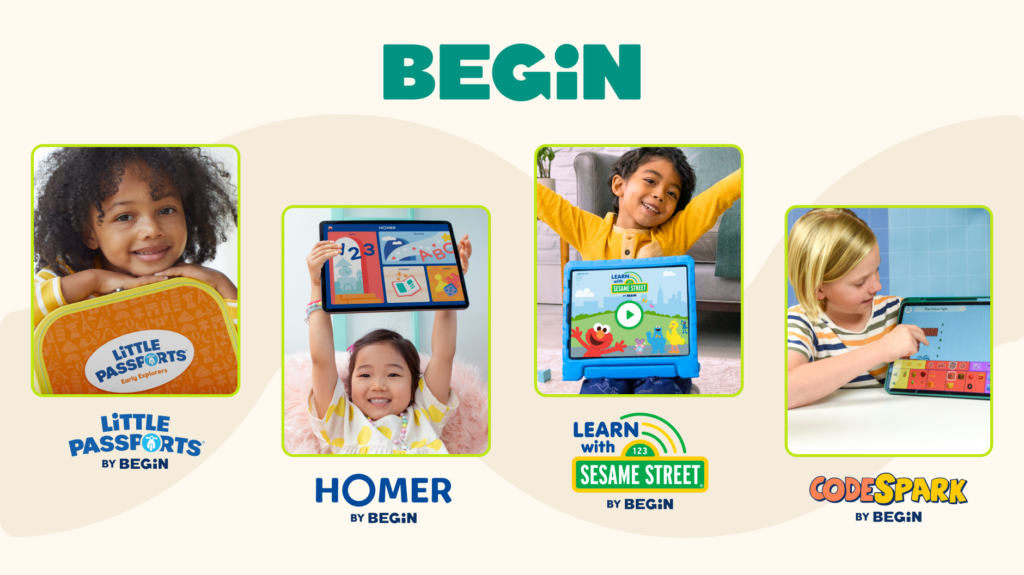
Teaching kids empathy is an ongoing process. There are many situations that lend themselves to practicing it, but it takes patience and time.
Begin can help. Our Learn with Sesame Street program contains social-emotional learning games, videos, and classes created with Sesame Workshop to help kids build a wide range of character skills.
Whether kids are identifying feelings on the app, celebrating kindness with one of the hands-on games, or seeing empathy in action with Elmo, they’ll be on their way to building a stronger sense of connection to the world and everyone in it.
Start today!
